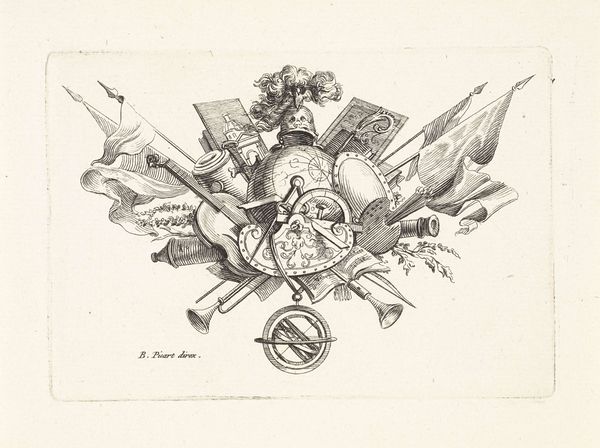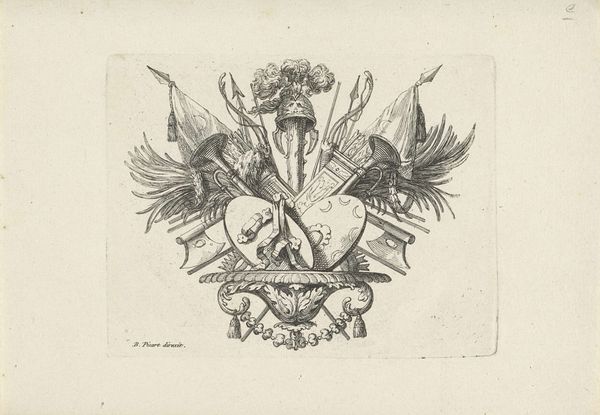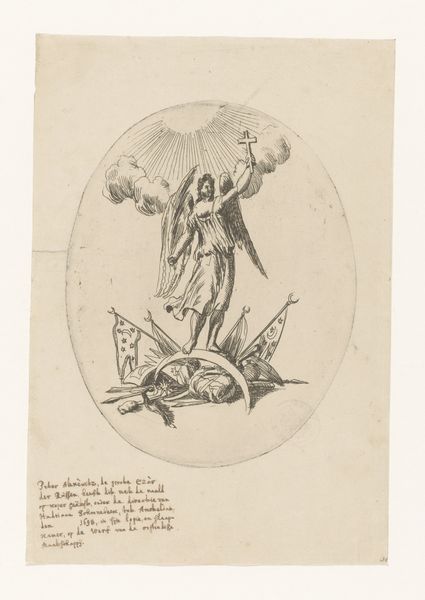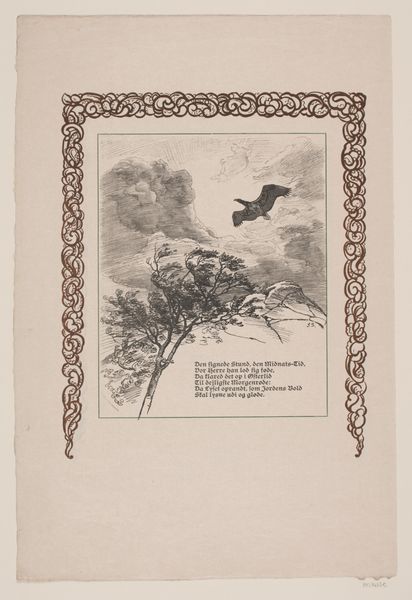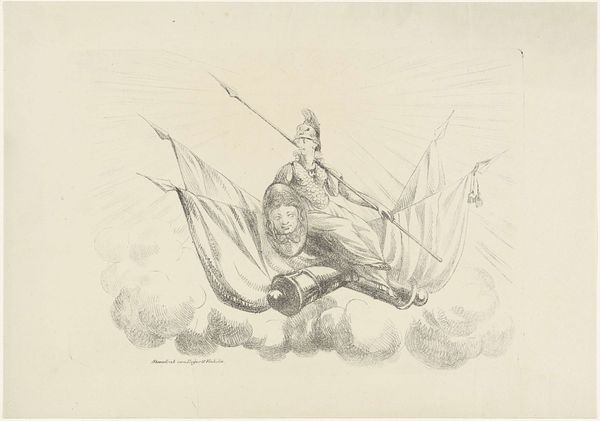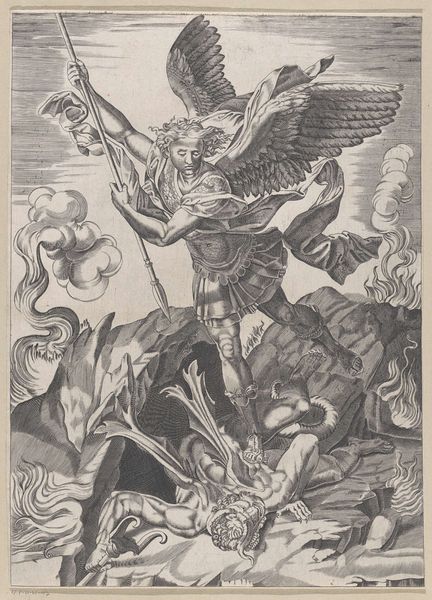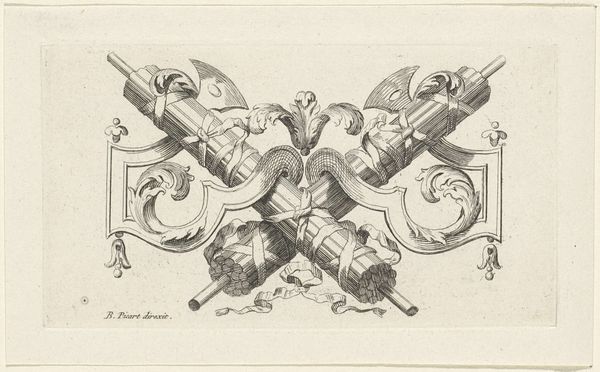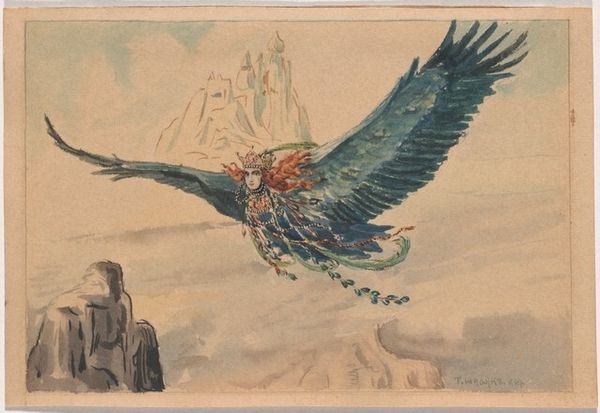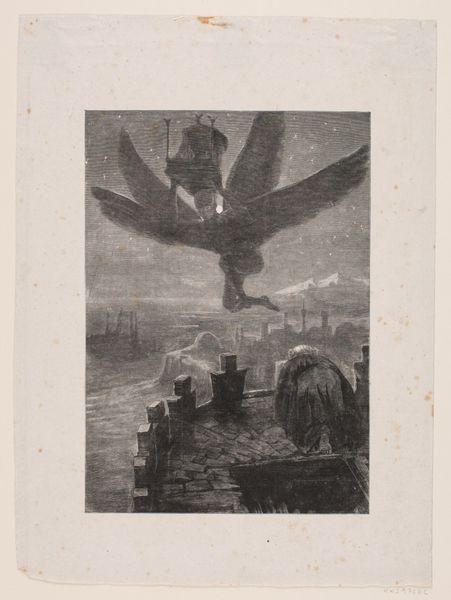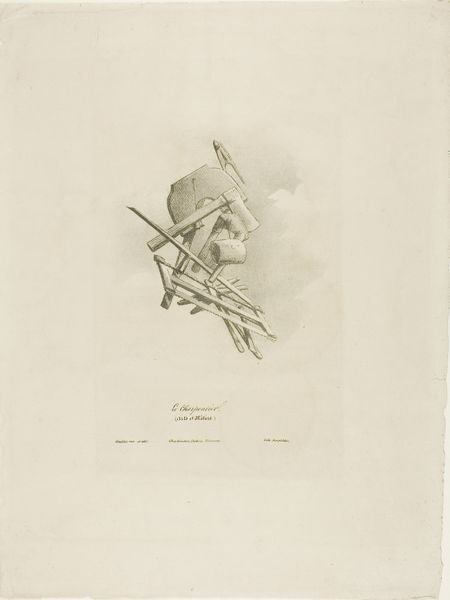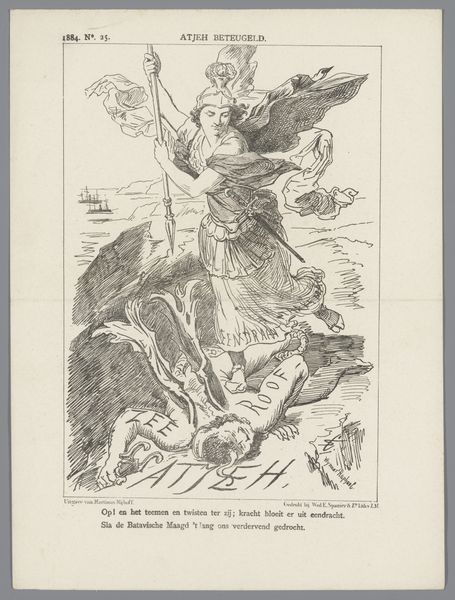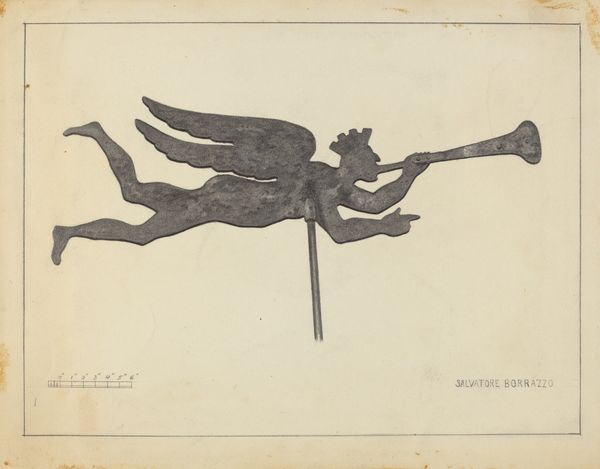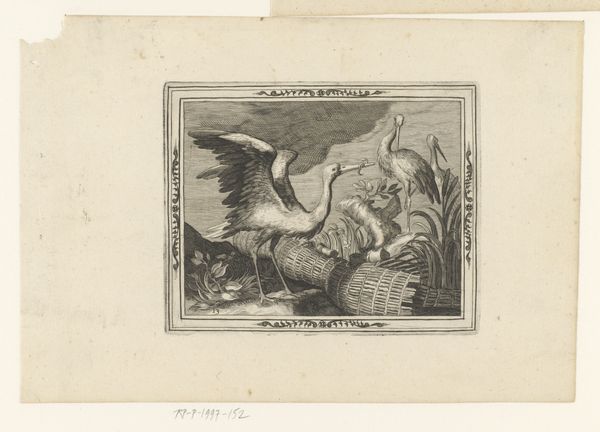
drawing, pen
#
drawing
#
imaginative character sketch
#
quirky sketch
#
narrative-art
#
caricature
#
personal sketchbook
#
idea generation sketch
#
sketchwork
#
ink drawing experimentation
#
pen-ink sketch
#
sketchbook drawing
#
pen
#
storyboard and sketchbook work
#
sketchbook art
#
realism
Dimensions: height 275 mm, width 215 mm
Copyright: Rijks Museum: Open Domain
Editor: So, here we have "Spotprent over de buitenlandse politiek," a pen and ink drawing from 1863 by Johan Michael Schmidt Crans. It's really striking - very graphic and full of these heraldic eagles. I find it a bit bewildering. What’s your read on this work? Curator: Well, considering the socio-political climate of 1863, these aren’t just eagles. They're national symbols, caricatured to represent the political landscape. We see the Russian Empire and Prussia quite clearly represented, but look at the placement: Russia's eagle is weighed down, holding onto… a lamb, perhaps? And Prussia seems perched precariously above. It’s a loaded image, ripe with political commentary. What power dynamics do you think Crans is trying to highlight here? Editor: I guess the lower position of the Russian eagle shows its weakness? The lamb it's holding seems to suggest vulnerability. And the Prussian eagle seems to want the same level of power and superiority than the eagle looking down upon it? Curator: Precisely. Crans uses familiar national symbols and skews them, embedding political opinion directly into a publicly accessible form, the drawing. Consider the context – the mid-19th century was a period of immense upheaval and shifting alliances. Works like this played a significant role in shaping public discourse. This imagery serves as both documentation and potent political weapon. What is interesting to you is the artist's choice of style in producing this imagery? Editor: It’s fascinating how effectively simple sketches can communicate complex political narratives. It is more direct. It is as if it is trying to be a universal language that anybody can quickly understand and interpret in comparison to very expressive complex paintings that may rely too much on subjectivity. Curator: Exactly. The accessibility of caricature allows the drawing to circumvent some of the usual gatekeepers. We must consider its context and role in disseminating ideas and perhaps in influencing them. Editor: I hadn't thought about it that way. Seeing the political drawing now through that lens makes it even more powerful, as something designed to inform popular opinion, not just decorate a wall. Curator: Yes, it becomes less about aesthetics and more about action. Art having a life beyond the museum walls.
Comments
No comments
Be the first to comment and join the conversation on the ultimate creative platform.
